
Journal of Cachexia Sarcopenia and Muscle
Scope & Guideline
Empowering the dialogue on muscle wasting challenges.
Introduction
Aims and Scopes
- Cachexia and Sarcopenia Research:
The journal primarily investigates cachexia and sarcopenia, exploring their underlying mechanisms, clinical implications, and the impact on patient outcomes, particularly in cancer and chronic diseases. - Muscle Health and Functionality:
Research on maintaining and improving muscle health, including studies on muscle regeneration, strength, and the effects of various interventions such as exercise, nutrition, and pharmacotherapy. - Biomarkers and Diagnostic Tools:
Investigation of biomarkers for diagnosing and monitoring sarcopenia and cachexia, as well as the development of innovative diagnostic tools utilizing imaging and molecular techniques. - Interdisciplinary Approaches:
Emphasizes the integration of various disciplines such as nutrition, exercise science, geriatric medicine, and oncology to address the complexities of muscle health in different populations. - Public Health and Policy Implications:
Exploration of the public health implications of muscle wasting conditions and the formulation of guidelines for clinical practice and policy-making aimed at improving muscle health in the aging population.
Trending and Emerging
- Interplay of Inflammation and Muscle Health:
Recent studies increasingly focus on the role of inflammation in muscle atrophy and cachexia, highlighting the need to understand inflammatory pathways and their impact on muscle metabolism. - Nutritional Interventions and Muscle Preservation:
There is a growing emphasis on the role of nutrition in preventing and treating sarcopenia and cachexia, with research exploring specific dietary components and supplementation strategies. - Multimodal Interventions:
Research is trending towards multimodal approaches that combine exercise, nutritional support, and pharmacological interventions to optimize muscle health and combat muscle wasting. - Technological Advances in Assessment and Monitoring:
Emerging technologies, including machine learning and advanced imaging techniques, are increasingly being utilized for the assessment of muscle health, enhancing the precision of diagnostics and monitoring. - Psychosocial Factors and Muscle Health:
An emerging theme is the exploration of psychosocial factors, including mental health and social support, and their effects on muscle health outcomes, particularly in older adults.
Declining or Waning
- Basic Science of Muscle Physiology:
There appears to be a waning interest in purely basic science studies focusing on muscle physiology without direct clinical applications, as the journal shifts towards more translational and clinical research. - Animal Models of Cachexia and Sarcopenia:
Research using animal models, while still present, is less frequently highlighted compared to clinical studies involving human populations, indicating a potential decline in the relevance of animal models in the current discourse. - Single-Intervention Studies:
Studies focusing on single interventions (e.g., exercise alone) without considering multi-faceted approaches (nutrition, pharmacotherapy, etc.) are becoming less common, as the field increasingly recognizes the complexity of treating muscle wasting. - Epidemiological Studies with Limited Clinical Relevance:
There is a decreasing trend in purely epidemiological studies that do not connect findings to clinical practice or patient outcomes, as the journal prioritizes research with direct implications for treatment and management.
Similar Journals

JOURNAL OF PHYSIOLOGY AND BIOCHEMISTRY
Empowering Scholars to Shape the Future of Health SciencesJOURNAL OF PHYSIOLOGY AND BIOCHEMISTRY, published by Springer in the Netherlands, serves as a pivotal platform for disseminating high-quality research within the fields of physiology, biochemistry, and related biomedical sciences. With an impressive impact factor reflected in its categorization as Q2 in Biochemistry and Q1 in Medicine (miscellaneous), this journal fosters a vibrant community of scholars dedicated to advancing knowledge and innovation. The journal’s broad scope encompasses a wide range of topics from cellular mechanisms to systemic physiology, making it relevant for both theoretical and applied sciences. Researchers and practitioners are encouraged to utilize the available Open Access options to reach a wider audience. The journal’s continuous contribution to the scientific dialogue since its inception in 1996 positions it as a key resource for professionals and students alike, facilitating the exploration of cutting-edge topics and collaborative research opportunities.
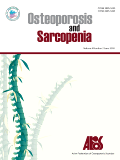
Osteoporosis and Sarcopenia
Exploring the intersection of osteoporosis and sarcopenia.Osteoporosis and Sarcopenia is a leading journal dedicated to the multidisciplinary exploration of diseases related to bone health and muscle degeneration, published by Elsevier. With an ISSN of 2405-5255 and an E-ISSN of 2405-5263, this open-access journal has been a vital resource since its inception in 2015, enabling unrestricted access to groundbreaking research. Its objective is to elucidate the interplay between osteoporosis and sarcopenia, offering valuable insights into diagnostics, treatment strategies, and preventive measures in the field. The journal serves as a crucial platform for researchers, healthcare professionals, and students, fostering collaboration and innovation in understanding these prevalent conditions. Given the global rise in aging populations, the significance of this journal cannot be overstated, making it an essential reference for those committed to advancing knowledge in musculoskeletal health.
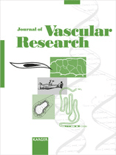
JOURNAL OF VASCULAR RESEARCH
Innovating research in vascular health.Welcome to the JOURNAL OF VASCULAR RESEARCH, a reputable academic journal published by KARGER that has been a cornerstone of vascular research since 1964. With an ISSN of 1018-1172 and an E-ISSN of 1423-0135, this journal plays a vital role in disseminating cutting-edge research in the fields of Cardiology and Cardiovascular Medicine and Physiology. Currently categorized in the Q3 quartile for both disciplines, it ranks as #179 in Cardiology and #131 in Physiology according to Scopus, showcasing its significant contribution to the scientific community. Although the journal operates on a subscription basis, it strives to provide accessible content that informs and inspires researchers, professionals, and students alike. As the journal looks forward to its convergence in 2024, it continues to uphold its mission of advancing knowledge, fostering innovation, and encouraging collaboration within the dynamic realm of vascular research.
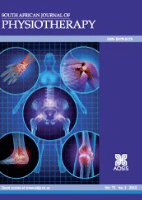
South African Journal of Physiotherapy
Innovating Practices in Sports Therapy and RehabilitationWelcome to the South African Journal of Physiotherapy, an esteemed open access journal published by AOSIS that has been serving the physiotherapy community since 2002. This journal is dedicated to advancing knowledge in the fields of Physical Therapy, Sports Therapy, and Rehabilitation, featuring a wide array of research articles, clinical studies, and reviews. With an ISSN of 0379-6175 and E-ISSN of 2410-8219, the journal is indexed in Scopus and has been classified in the third quartile (Q3) as of 2023, ranking #153 out of 247 within its category. Based in South Africa, the journal reflects the rich therapeutic landscape of the region and promotes international collaboration in physiotherapy research. By providing a platform for innovative ideas and practices, the South African Journal of Physiotherapy aims to foster excellence in education and practice among researchers, professionals, and students alike.
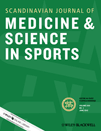
SCANDINAVIAN JOURNAL OF MEDICINE & SCIENCE IN SPORTS
Transforming Sports Health with Innovative Research.SCANDINAVIAN JOURNAL OF MEDICINE & SCIENCE IN SPORTS, published by Wiley, stands at the forefront of research in the fields of orthopedics, sports medicine, and physical therapy. Established in 1991, this prestigious journal has built a strong reputation, reflected in its Q1 ranking across multiple categories including Orthopedics and Sports Medicine, and Physical Therapy and Rehabilitation, as of 2023. With a discerning focus on innovative research and practical applications, the journal publishes high-quality studies that advance the understanding of sports performance and rehabilitation strategies. Although it does not offer open access, it remains accessible through various institutional subscriptions, ensuring that both practitioners and academics can benefit from its findings. The journal's commitment to excellence is further evidenced by its impressive Scopus rankings, placing it in the top 94th percentile within its respective fields. As the athletic landscape continues to evolve, SCANDINAVIAN JOURNAL OF MEDICINE & SCIENCE IN SPORTS serves as an essential resource for researchers, clinicians, and students dedicated to improving health outcomes in sports and exercise.
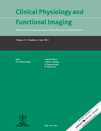
CLINICAL PHYSIOLOGY AND FUNCTIONAL IMAGING
Pioneering research that illuminates health and disease.Clinical Physiology and Functional Imaging, published by Wiley, is a distinguished journal dedicated to advancing the fields of clinical physiology and biomedical imaging. This UK-based publication, with an ISSN of 1475-0961 and an E-ISSN of 1475-097X, has established itself as an important resource for researchers and professionals from various backgrounds, focusing on the physiological mechanisms underlying human health and disease through innovative imaging techniques. With a convergence year span from 2002 to 2024, the journal is classified within the Q3 quartile across several medical and physiology categories in 2023, reflecting its commitment to quality research amid a competitive landscape. Although it currently lacks an H-index, its rankings within Scopus—#70 in Medicine (Miscellaneous) and #134 in Biochemistry, Genetics and Molecular Biology—underscore its relevance in a rapidly evolving field. Engaging with this journal offers an opportunity to explore emerging research that bridges clinical practice and advanced imaging modalities, making it an essential read for students and established professionals alike.
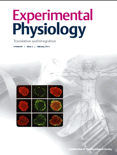
EXPERIMENTAL PHYSIOLOGY
Pioneering discoveries in the realms of Nutrition and Physiology.EXPERIMENTAL PHYSIOLOGY, published by WILEY, stands as a vital resource in the fields of Nutrition and Dietetics and Physiology, providing high-quality, peer-reviewed research since its inception in 1990. With an impressive categorization into the Q2 quartile in these domains, the journal emphasizes the integration of experimental and clinical findings, making significant contributions to our understanding of physiological processes and nutritional impacts on health. The journal operates within a competitive landscape, ranked significantly in Scopus, showcasing its relevance to both the medical community and nutritional sciences, as evidenced by its rankings in Nursing, Medicine, and Biochemistry. Though it is not currently open access, the journal remains an indispensable tool for researchers, professionals, and students seeking to deepen their knowledge and stay updated on cutting-edge research. With a publication window extending to 2024, EXPERIMENTAL PHYSIOLOGY continues to influence the academic discourse and promote advancements in its respective fields.
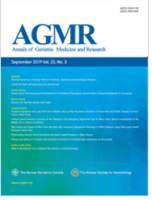
Annals of Geriatric Medicine and Research
Advancing knowledge in geriatric care.Annals of Geriatric Medicine and Research, published by the Korean Geriatric Society, is a premier open-access journal dedicated to advancing the understanding of geriatric medicine and gerontology. Since its inception in 1997, the journal has played a crucial role in disseminating significant research findings, policy discussions, and clinical innovations that address the complexities of elderly healthcare. Based in South Korea, the journal has gained recognition with an impact factor reflecting its Q2 ranking in the field of Geriatrics and Gerontology for 2023, placing it competitively within its category among 116 journals. Researchers, healthcare professionals, and students will find comprehensive insights ranging from clinical studies to public health strategies crucial for enhancing the quality of life of older adults. With a commitment to open access, the journal ensures that its valuable information is freely available, fostering collaboration and knowledge-sharing that is vital in this dynamic field.

JOURNAL OF MUSCLE RESEARCH AND CELL MOTILITY
Unraveling the Complexities of Muscle Function and MobilityJOURNAL OF MUSCLE RESEARCH AND CELL MOTILITY, published by Springer, is a premier journal dedicated to advancing our understanding of muscle biology and cellular motility. With an ISSN of 0142-4319 and an E-ISSN of 1573-2657, this journal stands out in the fields of biochemistry, cell biology, and physiology, proudly holding a Q2 ranking in each of these categories as per 2023 metrics. Covering significant developments from its inception in 1963 to its anticipated contributions through 2024, this journal serves as a vital platform for researchers and professionals to disseminate their findings and insights globally. Although it does not currently offer open access, its robust academic rigor and relevance are evident from its Scopus rankings, making it a crucial resource for those invested in the biological sciences. With a focus on original research articles, reviews, and methodological advancements, the journal fosters innovative collaborations and discussions within the scientific community, making it an invaluable addition to any researcher’s library.

MUSCLE & NERVE
Exploring the Intersection of Physiology and NeuroscienceMUSCLE & NERVE is a prestigious journal dedicated to the exploration and advancement of knowledge in the fields of neurology, cellular and molecular neuroscience, and physiology. Published by Wiley, this journal has been a crucial resource for researchers and practitioners since its inception in 1978, with an impressive convergence of studies anticipated through 2024. With an Impact Factor reflecting its relevance and influence—ranking in the Q2 and Q3 quartiles across multiple categories, including clinical neurology and medical physiology—MUSCLE & NERVE offers a rigorous peer-reviewed platform for groundbreaking research. It holds a respected position in Scopus rankings, illustrating its commitment to excellence and innovation in medicine and neuroscience. As a non-open access journal, it provides valuable resources for professionals seeking to further their understanding of neuromuscular physiology and related disciplines. The journal aims to foster dialogue and disseminate knowledge that advances the field, making it an indispensable tool for academics and clinicians alike.